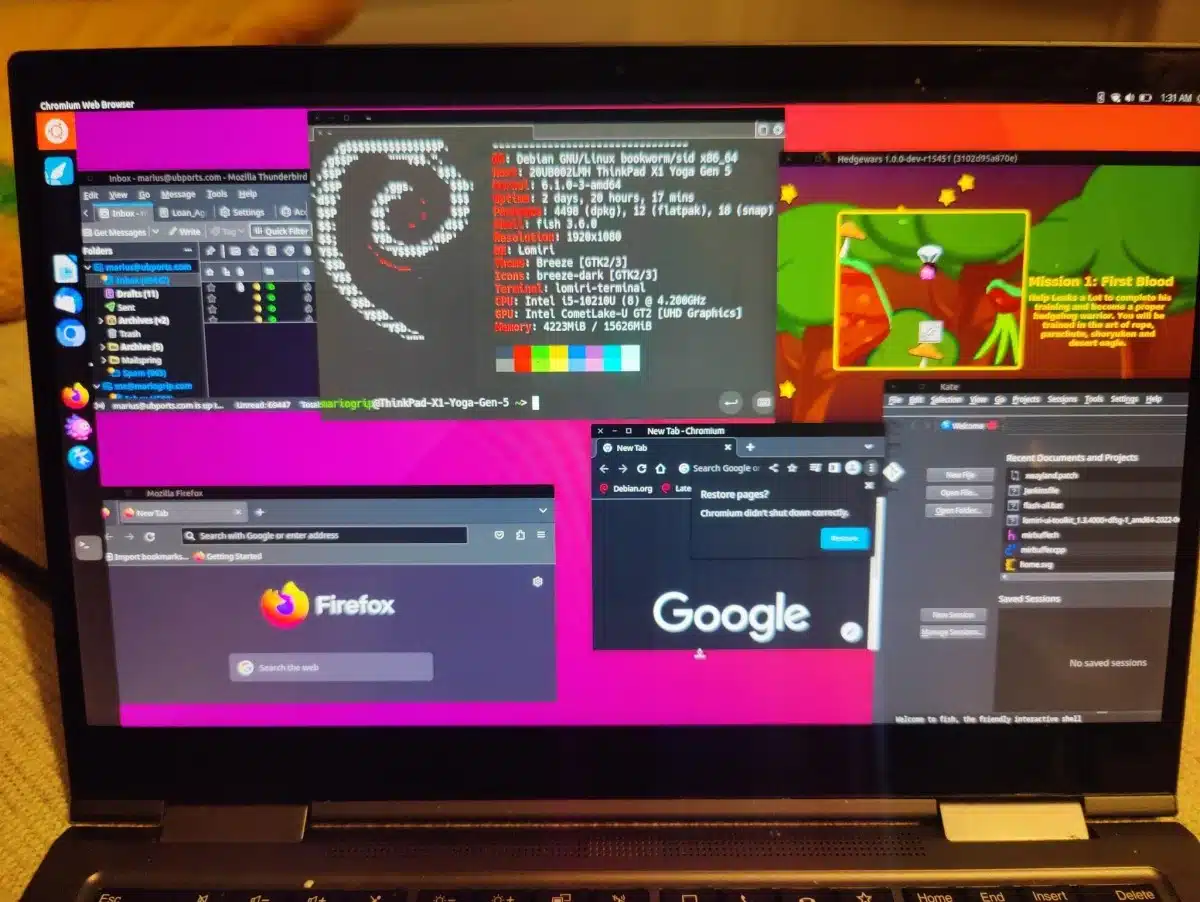
They had not publicized it as in other events, but it took place in February. In fact, earlier than the middle of last month. If I found out, it was because the official UBports Twitter account retweeted a tweet from Marius Grispgard (author of the header photo) in which he told us about this, if not feat, progress. And it is that, although it is true that the original idea of Canonical was convergence, in the end there was a parting of ways, and lomiri, formerly known as Unity8, only ran on Ubuntu Touch phones and tablets.
The news is that Lomiri can be used as main option in Debian. At least that's what Gripsgard, who is part of UBports, says and that the desktop system he uses is Debian. On February 11th he said that he is already in the original file, but still required some minor changes to improve his stability. We are already in March, and the only new thing we know is actually nothing. Only that Lomiri will be able to be installed on Debian, and probably on its descendants like Ubuntu and Linux Mint.
A bit of history about Lomiri
canonical introduced Unity next to Ubuntu 10.10, and the most common word I've heard about that change was that of a disease. Unity was that disease, since if before it was working perfectly even on computers of those of 10.1″, its use ceased to be a possibility if it was not running on a somewhat more powerful computer.
The intention, and this was communicated by Mark Shuttleworth, was to use the same graphical environment on mobile phones and on the desktop. He tried, but failed (neither did Apple or Microsoft, it must be said) and years later, in 2018, they returned to GNOME. Ubuntu Touch it was then discontinued, or would have been if UBports hadn't taken over the project.
Since then there have been three fronts: on the one hand, a young Indian who still has at least 10 years (or 20) left to stop being one, took over Unity, UBports from unity8 and Canonial forgot about everything and opted for GNOME. Unity8 was supposed to be the mobile version of Unity, but pronouncing its name in English (“iunitieit”) was not easy, so they decided to rename it Lomiri.
Now Ubuntu uses GNOME, Ubuntu Unity it has become the official flavor and Lomiri is what is available on devices like PINE64 among others.
The best concept of a mobile interface for Linux
I have tried, that I remember, at least three graphical environments on a tablet with Linux: phosh, Plasma and Lomiri. I tend to like KDE software, but as some Anglo would say, Plasma Mobile is a bit "desktopish"; even if it is for mobile devices, it has a lot of desktop, and that for me is not the best. Phosh works very well, but I don't like its interface at all, at least on a tablet. On the other hand, if we focus on the graphical environment, Lomiri is probably the best.
In the header capture you can see what the "undocked" interface would be like (or something like that I've read). That is, the distribution (from positioned, not from distro) or the desktop interface of Lomiri. Windows can be resized and use as we could in GNOME, and we also have the tablet mode whose gestures far exceed, always in my opinion, those of Phosh and Plasma, and waiting to see what launches GNOME.
But the news that we are dealing with today tells us about the desktop version on a desktop computer, something on which I cannot comment much. Yes, I can say that it is the same as moving devices with low resources, so fluency is almost guaranteed. When it can be downloaded and tested, don't have the slightest doubt that I will test it, but for now we already know that sooner rather than later it will be able to be used, at least in Debian.